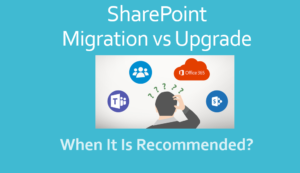Improving SharePoint content classification and providing better Search results is an ongoing task. As businesses grow and their SharePoint content swells, it requires regular tweaks to improve crawling and indexing focused on providing better Search results.
Explained below are the points you need to take care of to improve search and how you can use the SharePoint Information Organizer to achieve better performance of Search.
All SharePoint content and metadata is crawled periodically. The crawl records details like the Created Date, Author, Title, Modified Date, etc. If the volume of data is large, SharePoint administrators may also have to undertake bulk metadata update to index all the required content. This offers search results devoid of irrelevant data.
To facilitate content search and retrieval, administrators and content owners have to ensure that the content is classified in a manner that will enable the execution of Search related operations based on various Search and processing components. These components are explained in the table below.
| SharePoint Search Components | |
| Search Components | Description |
| Analytics Processing Component | Used in analyzing Search and Usage |
| Content Processing Component | Converts the crawled Items for use in the Index. It’s also responsible for mapping crawled properties to the managed properties |
| Crawl Component | Crawls SharePoint content to gather properties and metadata and sends them for further processing |
| Index Component | Builds a Search Index from processed Items, which is then matched with incoming queries. Matching results are sent back as replies to the Query Processing Component |
| Query Processing Component | Analyzes Search queries destined for Index Component for improving relevance of content and the precision of Search |
| Search Administration Component | Runs Search processes and handles instances of Search components |
All these components play their role effectively only when Metadata, Content Types, Managed Terms, Search Scope, Term Sets, etc. are clearly defined and used. Administrators and content owners must fulfill this responsibility to make their SharePoint content favorable for quick search and retrieval.
The SharePoint Information Organizer helps administrators and content owners fulfill this need as it’s has a multitude of features supporting content and metadata management. Here’s a look at its home page showing all the options.
By combining features like Classify Content, Manage Content, Cleanup Content and Search Content, administrators improve and enrich metadata columns and fields. If necessary, additional information can be imported into SharePoint columns from spreadsheets to update the metadata.
Apart from this, as and when necessary, similar Items from various Lists and Libraries can be merged into a single List making it easier for indexing content and subsequently improve search results. To further improve the search feature, Content Type search is provided adding another property to use during search. Unnecessary content types can also be deleted whenever required further narrowing the scope of search and improving results. The content cleanup options make it easier to remove unwanted Items filtering out content that does not need to be indexed.
The content management features described above help administrators improve the search ability of their SharePoint, quickening response and also improving the way content is retrieved from SharePoint.
For more on the SharePoint Information Organizer, please visit – https://www.vyapinsoftware.com/products/sharepoint-migration/dockit/sharepoint-migration-tools








